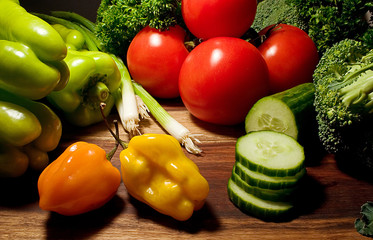
Fresh Vegetables
How to Cook Vegetables
Have you ever bitten into a piece broccoli only to have it turn to mush in your mouth? Well, that’s what happens when you over-cook your vegetables. Not only do vegetables become unpalatable when they’re over-done, they lose most of their nutritional value when overcooked.
Blanching:
Blanching is when vegetables are placed in hot liquid to cook. If you’re using water, make sure you have at least 5X the amount of H2O to veggies proportionally. Add at least 2 tablespoons of Kosher or sea salt to the water. When the water comes to a boil, add your vegetables. If you’re cooking broccoli for example, watch your veggies carefully; it only takes a few minutes until the cooking process is complete. You can tell that the broccolis done by removing a piece and tasting it. The broccoli should be bright- green and crunchy, not over-done. Dress with lemon juice, olive oil or butter, and serve immediately.
Grilling:
Light your grill, and let it come to temperature; at least 350 degrees. Place desired veggies in a large metal bowl, and coat with a small amount of olive oil, salt and pepper. Arrange the vegetables on the grill so that they are not touching, and grill until each side is charred, but not over-cooked, approximately 3-4 minutes.
Oven:
Veggies may also be roasted in the oven. Place the oven on 375 degrees. As with the grilling method, put your veggies in a large bowl, coat with butter or olive oil, and season with salt and pepper. Place the vegetables on a greased cookie sheet and bake for 8-10 minutes.
Don’t Forget:
Don’t over-cook your vegetables! Not only are over-done vegetables unpleasing to the palate, they lose all of their nutritional value.
Try experimenting with different types of vegetable such as parsnips, cauliflower, baby carrots, and hot peppers!
Chef Chuck Kerber
Cooksandeats.com
chuck@cooksandeats.com






 in <b>/var/www/vhosts/cooksandeats.com/httpdocs/wp-content/themes/CooksandEats/sidebar.php</b> on line <b>1</b><br />
/wp-content/themes/CooksandEats/images/side-logo.png)



 in <b>/var/www/vhosts/cooksandeats.com/httpdocs/wp-content/themes/CooksandEats/footer.php</b> on line <b>13</b><br />
/wp-content/themes/CooksandEats/images/back-to-top.png)